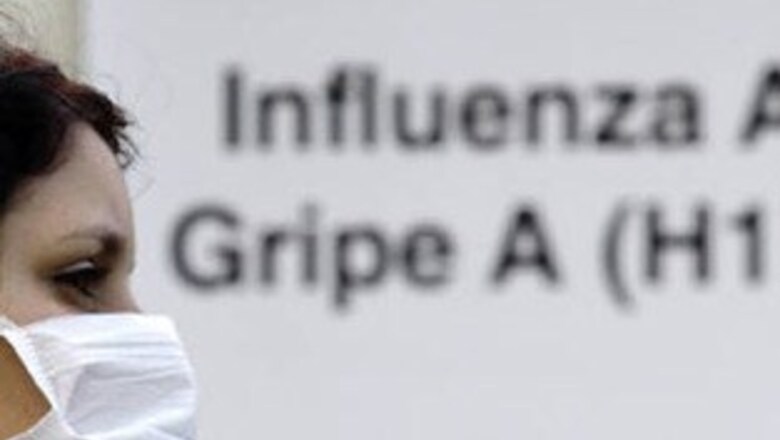
views
Hong Kong: Asia is going to be way short of the new H1N1 vaccine to fight swine flu when the next surge of infections hits during the cold season this year, a spokesman for the World Health Organisation ( WHO) said on Tuesday.
Australia and China are due to begin producing the vaccines in September, but these would be used domestically and the rest of the region is unlikely to benefit.
"Nowhere is ready ... there is going to be massive underproduction of vaccines as compared to the needs and demand," said Manila-based WHO Spokesman Peter Cordingley.
Although the virus causes mild symptoms in many people, experts have warned against complacency because severe complications and deaths have occurred to pregnant women, young children, people with underlying health problems like obesity and diabetes, and worryingly, even healthy young adults.
The H1N1 is largely treatable using oseltamivir but vaccines are recommended as a population-wide method of prevention.
"We are going to see at least in Australia and China the start of the production of vaccines. Of course that doesn't make any difference at all to the rest of Asia because I think it is predictable that Australia and China will use their vaccines domestically," Cordingley told Reuters.
"Nobody is going to do very well, it'll be a long time before production comes up to even answering Australia's problems."
In Japan, the flu season has already arrived while its drug companies have not even started producing the new vaccine.
PAGE_BREAK
Cordingley said the lack of vaccines in developing countries was of particular concern.
"They don't have resources, they have populations that are at such high risk in cramped conditions in squatter villages, with no health services, no access to a doctor, lots of pregnant women, we are very worried about it."
PREPARATION PATCHY
Some governments in Asia have purchase contracts with major vaccine makers, but when these will arrive is still in question.
Japan wants to provide enough H1N1 flu vaccine to treat 53 million people, nearly half its population. But Japanese makers are expected to be able to produce enough vaccine to treat only 13 million to17 million people.
"The reality is that if we do not have enough, we have to bring them in from somewhere else," Chief Cabinet Secretary Takeo Kawamura said, adding that funds will need to be secured.
Indonesia, with a population of 226 million, has not signed any contract with foreign vaccine makers, said the Health Ministry's Chief of Disease Control, Tjandra Yoga Aditama.
State-owned Bio Farma is one of 23 drug companies in the world approved by the United Nations to produce the new vaccine. But it is learning how to make seasonal flu vaccine before it can move on to manufacture H5N1 and H1N1 vaccines, the company said.
China plans to have enough vaccine to cover only five per cent of its population by year-end, according to state media. Initial tests have shown the vaccine to be "safe and reliable".
Singapore, which has a contract with Australia's CSL Ltd to supply it with the new vaccine, is negotiating with other major vaccine manufacturers to diversify its supply.
"The key consideration in procuring pandemic vaccine is the safety and efficacy of the vaccine. Singapore is still studying the experiences of other countries and will stage our vaccine orders to take into account latest developments," it said.
Hong Kong invited vaccine makers to supply it with vaccines that will cover 2.5 million people, or a third of its population, but that plan fell through. It will open another tender soon.




















Comments
0 comment